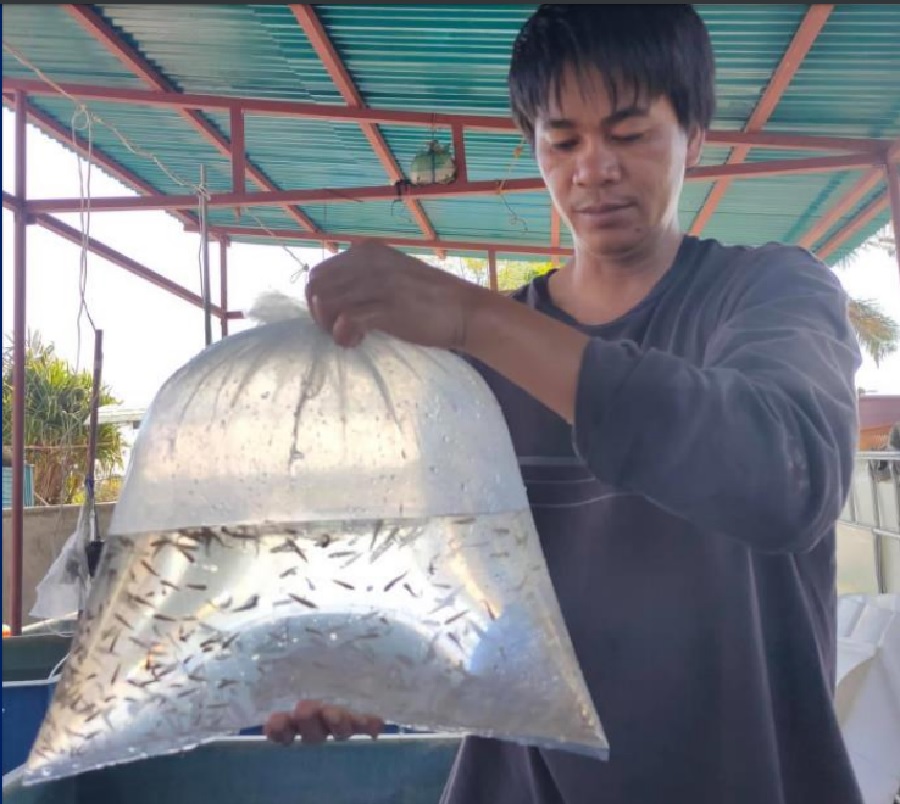
Filipino Scientists Develop Easy, Affordable and Efficient Method of Fish Spawning
May 10, 2023| |
Researchers from the National Fisheries Research and Development Institute (NFRDI) in the Philippines have developed a fish-spawning method that will allow fish farmers to produce high-quality, pure spawn during off-season that do not require a high level of technical knowledge to execute. The method is expected to help Filipino farmers reduce their dependence on wild stocks while helping achieve national food security.
The induced spawning technique was developed by a team of experts led by Dr. Casiano Choresca of NFRDI, who is also the Center Chief of the Philippines' Department of Agriculture Fisheries Biotechnology Center. Fish-spawning involves the regulation of environmental condition or introduction of hormones to stimulate reproduction and the promotion of gonadal ripening and timely release of the fish's sperms and eggs. Induced fish-spawning is meant to bypass the natural biological processes to speed up spawning. The technique that Dr. Choresca's team developed was designed to be simple for the common fisherfolk to accomplish. It removes the uncertainties in breeder spawning, can produce fry for hatchery and grow-out even outside the spawning season, can provide pure spawn or fish under cultivation, and offers a more controlled hatchery or aquaculture operations.
The technique can be applied to mudfish, a popular fish in the Philippines known for its tasty white, firm, and almost boneless flesh. It begins with identifying good quality and mature broodstock to be induced, which are harvested from the pens. The fish's flesh is exposed to anesthesia for a few minutes before cannulation. Hormones are then injected into the fish and the area is massaged for an even distribution of the suspension. The fish are then placed in pens that are divided into sections using mesh nets as separators, with a 1:1 ratio of male and female per section. Spawning can take place between 24 to 32 hours after injection, and the fertilized fish eggs that float are collected two to three hours after spawning. The eggs are incubated in a hatching facility that controls the temperature of the water, which stimulates hatching that can occur between 24 to 30 hours after fertilization. After hatching, the fry are placed in rearing facilities until the desired stage of adulthood.
According to Dr. Choresca, induced spawning technology in fish is an easy, straightforward, smart, and efficient way to increase fisheries and aquaculture production that can result to higher yields and increased profit for fisherfolk. It does not require expensive equipment nor highly technical expertise to perform. Fisherfolk in the Philippines are encouraged to turn to this more affordable fish production option to alleviate the sharp decline of fish population due to overfishing and other anthropogenic activities.
For more details, watch the Pinoy Biotek for Us webinar episode where Dr. Choresca explains the method and the findings of their study, or download a copy of his presentation from the ISAAA website.
| |
You might also like:
- Philippines' Department of Agriculture Biotech Program Supports Improved Mudfish and Catfish Production Technologies
- Domestic Biotech Innovations to Aid Philippine Agri and Aquaculture
- Fishery and Aquaculture Biotech to Enhance Philippines’ Research and Economic Capacity
Biotech Updates is a weekly newsletter of ISAAA, a not-for-profit organization. It is distributed for free to over 22,000 subscribers worldwide to inform them about the key developments in biosciences, especially in biotechnology. Your support will help us in our mission to feed the world with knowledge. You can help by donating as little as $10.
-
See more articles:
-
Plant
- Protein Responsible for Strawberry’s Signature Red Color Identified
- Gene Editing Provides Promise to Grain and Oilseed Supply Chain
- Scientists Discover Puzzling Nature of RNA Editing in Plants
- Experts Promote Genome Editing Regulations that Consider Societal Benefits
- Bacterium Transfers Own Genes into Plants to Give Them Superpowers
- Genomic Surveillance Identifies Emerging Wheat Disease Fungus
-
Animal
- Filipino Scientists Develop Easy, Affordable and Efficient Method of Fish Spawning
-
Food
- First Plant-based Meat Substitute Facility in Abu Dhabi Launched
- Over a Quarter of a Billion Faced Severe Hunger in 2022 - Report
-
Read the latest: - Biotech Updates (December 17, 2025)
- Gene Editing Supplement (December 17, 2025)
- Gene Drive Supplement (February 22, 2023)
-
Subscribe to BU: - Share
- Tweet

